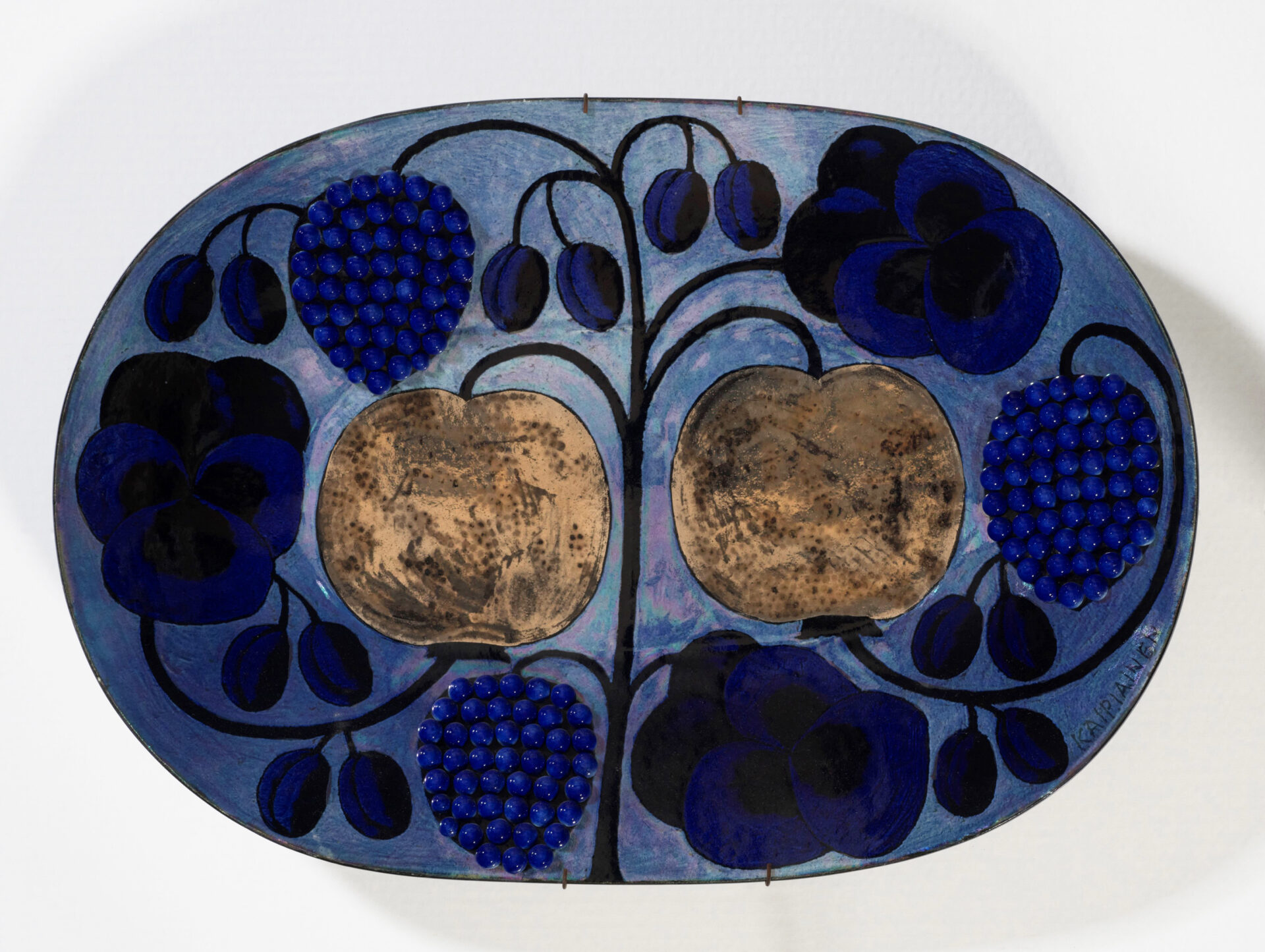Sara Hildén began steadily expanding her collection of Finnish art after the foundation was established in 1962. Today it features a wide spectrum of Finnish artists, some of whom are represented by an extensive body of work, including dozens of pieces by painters Kimmo Kaivanto, Kauko Lehtinen, Reino Hietanen and Jaakko Sievänen, sculptors Harry Kivijärvi and Kain Tapper, and graphic artists Outi Heiskanen and Pentti Lumikangas. Also featured are early 20th century masters who exerted a major influence on the birth of Finnish modernism, such as Helene Schjerfbeck, Tyko Sallinen, Ragnar Ekelund and Otto Mäkilä.
In keeping with Sara Hildén’s legacy, the foundation continues to regularly accession new works to the collection. Recent additions include Heikki Marila, Jussi Niva, Silja Rantanen, Toni R. Toivonen, Marianna Uutinen and Kari Vehosalo. The Finnish collection currently contains a total of about 3,500 works.
The Erik Enroth Collection and Pentti Kaskipuro Bequeathed Collection are managed as their own subcollections.
1960s and 1970s: Informalism, Concrete art, Constructivism, New Realism and Pop art
Finnish art witnessed a watershed in the 1960s, with the arrival of abstract Informalism offering artists unprecedented freedom of expression. Competing with Informalism were Constructivism-inspired movements such as Concrete art, which embraced a geometrical idiom of abstraction. In the late 1960s and 1970s, other new movements sprang up alongside Informalism, Concrete art and Constructivism. New Realism and Pop art are among those abundtantly represented in the Sara Hildén Foundation Collection.
Not only does the collection feature a wide variety of Finnish artists, but some are represented by an extensive body of work, notably painters Kimmo Kaivanto and Kauko Lehtinen, as well as artists Göran Augustson, Juhana Blomstedt, Juhani Harri, Reino Hietanen, Ahti Lavonen, Juhani Linnovaara, Ernst Mether-Borgström, Gunnar Pohjola and Jaakko Sievänen. The collection contains many sculptures by Harry Kivijärvi, Kain Tapper, Mauno Hartman, Kimmo Pyykkö and Arvo Siikamäki, as well as numerous pieces by graphic artists Outi Heiskanen, Pentti Kaskipuro and Pentti Lumikangas.
1980s and 1990s: Painting in the expanded field
In the 1980s and 1990s, the museum augmented its Finnish collection mainly with paintings, without adhering to strict formal boundaries limiting what is defined as a ‘painting’. New acquisitions included traditional oil and tempera works, as well as drawings, graphic art and wooden sculptures. New names added to the collection included Kari Cavén, Leena Luostarinen, Jukka Mäkelä, Silja Rantanen, Teemu Saukkonen, Antti Tanttu, Marjatta Tapiola and Hannu Väisänen.
2000s: Paintings, sculptures, drawings, graphic art and media diversification
In the 2000s, about 770 works have been accessioned to the Sara Hildén Foundation Collection. Many have been acquired from the museum’s own retrospectives featuring artists such as Marika Mäkelä and Carolus Enckell, but new works are also purchased directly from studios and galleries. Continuity is a key theme in the accessioning policy. In its exhibitions, the museum strives to highlight informative, high-quality works that reflect the great diversity of contemporary art. Recently added artists include Tomas Byström, Erno Enkenberg, Jussi Heikkilä, Tiina Heiska, Heli Hiltunen, Antero Kahila, Pasi Karjula, Tuula Lehtinen, Elina Merenmies, Teemu Mäki, Leena Nio, Jussi Niva, Antti Oikarinen, Tamara Piilola, Osmo Rauhala, Mari Rantanen, Anna Retulainen, Janne Räisänen, Stiina Saaristo, Jyrki Siukonen, Mari Sunna, Anu Tuominen, Anna Tuori, Kristiina Uusitalo, Kari Vehosalo and Ilkka Väätti.
Erik Enroth Collection
The Sara Hildén Foundation Collection comprises roughly 500 early paintings by Erik Enroth dating from 1945-1963. Enroth is described as both an Expressionist and Cubist. Many of his paintings depict recurring themes close to the artist, such as factories, workers, townscapes, landscapes, still lifes, the circus, and sports. An interesting chapter in his oeuvre is formed by his numerous circus paintings from the 1940s and 1950s, which portray weary harlequins emphasizing the dark side of circus life
Pentti Kaskipuro Bequeathed Collection
In 2011, the Sara Hildén Foundation was bequeathed the collection of the notable Finnish graphic artist Pentti Kaskipuro. It contains roughly 2,000 graphic works by Kaskipuro, who is renowned for his black-and-white etchings of still life kitchen objects such as potatoes, bread, onions and swedes. The bequeathed collection also includes works by artists such as Marjatta Hanhijoki, Outi Heiskanen, Pentti Lumikangas and Giovanni Battista Piranesi.






